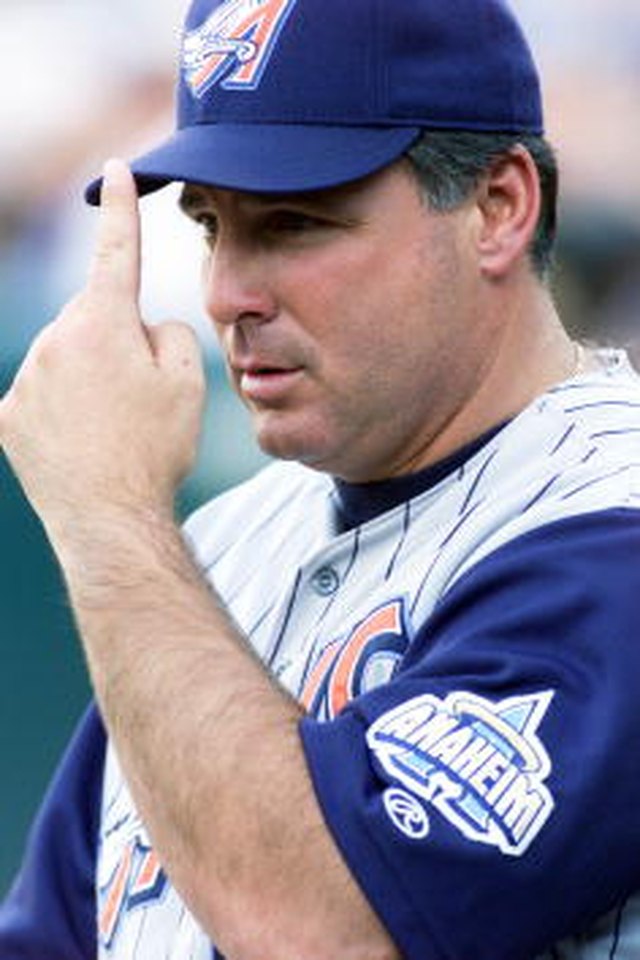How to Give Pitch Signs to a Catcher

In some situations in a baseball game, the catcher can be trusted to determine the type of pitch to be thrown. However, if the catcher is inexperienced or the situation calls for a specific play, the coach needs a way to relay pitch signs to the catcher. A series of hand signals similar to those given by a third base coach to a batter is the best way to direct the catcher.
Create a series of hand signs to signify each pitch. A touch of the cap signals a fast ball. A brush of the sleeve calls for a slider. Patting the chest means a changeup. Pointing to the wrist asks for a curveball. Develop signs that can be remembered easily by you and your catcher. Go over the signs during practices and games until they're memorized.
Tell the catcher before each inning which sign in the series will be the one to relay to the pitcher. Having only one sign gives the opposing team an opportunity to know which pitch is coming. Run through multiple signs, telling your catcher that the second sign you give will be the pitch to throw. Create a "wipeoff" sign that negates previous signs and restarts the series.
Position yourself during the game in a place where the catcher can clearly see you. A dugout has a number of possible obstructions, from fence posts to moving players. The catcher needs to have a clear line of vision to pick up the sign.
Give the proper sign for the pitch you want thrown. If you ever see a pitch thrown that you didn't call for, ask for time and meet with your catcher and pitcher on the mound. Throwing the wrong pitch at the wrong time can increase the opponent's chance of success.
Tips
Different pitchers throw a variety of different pitches, including lesser-used pitches such as the knuckleball, slurve, palmball and screwball. Create a signal for every pitch thrown by your pitching staff. In between innings, meets with your catcher so that both of you know the signs for the pitcher who will be throwing the next inning.
If you ever think the other team is reading signs, switch up your signs. Hitting becomes exponentially easier for opponents who know a certain pitch is coming. The goal is to relay the pitch to your catcher without tipping off the opponent.
References
Tips
- Different pitchers throw a variety of different pitches, including lesser-used pitches such as the knuckleball, slurve, palmball and screwball. Create a signal for every pitch thrown by your pitching staff. In between innings, meets with your catcher so that both of you know the signs for the pitcher who will be throwing the next inning.
- If you ever think the other team is reading signs, switch up your signs. Hitting becomes exponentially easier for opponents who know a certain pitch is coming. The goal is to relay the pitch to your catcher without tipping off the opponent.
Writer Bio
Based in California, Scott Levin has served as a writer and copy editor since 2000. His articles have appeared in the "Chico News & Review," "Wildcat Illustrated," the "Chico Enterprise-Record" and on websites such as The Sports Informant. Levin earned his Bachelor of Arts in journalism from California State University, Chico.
